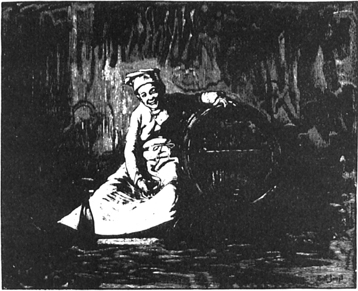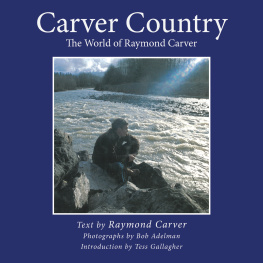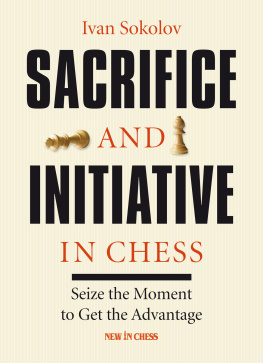Raymond Sokolov - Sauciers Apprentice
Here you can read online Raymond Sokolov - Sauciers Apprentice full text of the book (entire story) in english for free. Download pdf and epub, get meaning, cover and reviews about this ebook. year: 2010, publisher: Knopf Doubleday Publishing Group, genre: Home and family. Description of the work, (preface) as well as reviews are available. Best literature library LitArk.com created for fans of good reading and offers a wide selection of genres:
Romance novel
Science fiction
Adventure
Detective
Science
History
Home and family
Prose
Art
Politics
Computer
Non-fiction
Religion
Business
Children
Humor
Choose a favorite category and find really read worthwhile books. Enjoy immersion in the world of imagination, feel the emotions of the characters or learn something new for yourself, make an fascinating discovery.
- Book:Sauciers Apprentice
- Author:
- Publisher:Knopf Doubleday Publishing Group
- Genre:
- Year:2010
- Rating:5 / 5
- Favourites:Add to favourites
- Your mark:
- 100
- 1
- 2
- 3
- 4
- 5
Sauciers Apprentice: summary, description and annotation
We offer to read an annotation, description, summary or preface (depends on what the author of the book "Sauciers Apprentice" wrote himself). If you haven't found the necessary information about the book — write in the comments, we will try to find it.
Sauciers Apprentice — read online for free the complete book (whole text) full work
Below is the text of the book, divided by pages. System saving the place of the last page read, allows you to conveniently read the book "Sauciers Apprentice" online for free, without having to search again every time where you left off. Put a bookmark, and you can go to the page where you finished reading at any time.
Font size:
Interval:
Bookmark:

George Lang encouraged me at the beginning. My editor, Judith Jones, applauded the results of an early testing ordeal conducted under semi-tropical conditions in the New York summer heat; and then she continued to support the project with her well-known good taste and with friendly dollops of criticism. I am grateful to Earl Tidwell for his skillful work in designing the book. Sals Market in Brooklyn Heights and the Fulton Retail Fish Market in Manhattan responded gallantly to some bizarre requests. E. Dehillerin, the legendary Parisian kitchenware concern, kindly permitted me to use illustrations from one of their antique catalogues.
Mainly, however, I want to thank Margaret, Michael, and Joseph for submitting to months of late dinners and to an enforced period of gastronomic time travel backwards into the nineteenth century.
ALSO BY RAYMOND SOKOLOV
With the Grain
The Jewish American Kitchen
How to Cook: An Easy and Imaginative
Guide for the Beginner
Fading Feast: A Compendium of Disappearing
American Regional Foods
Wayward Reporter: The Life of A. J. Liebling
Native Intelligence
Great Recipes from The New York Times

RAYMOND SOKOLOV was born in Detroit in 1941. He graduated from Harvard, then attended Wadham College, Oxford, as a Fulbright Scholar before returning to Harvard for graduate study. He has worked as a foreign correspondent and book critic for Newsweek and as the Food Editor for The New York Times. Mr. Sokolov wrote a monthly feature for Natural History magazine for twenty years. And for the past fourteen years he has been the Leisure & Arts Editor for The Wall Street Journal. He lives with his wife in New York City.
History
of French
Sauces


In France, there have always been sauces, which is to say that the Franks and the Gauls moistened their food with a flavored liquid. These early sauces, spiced and pungent, sweet and sour, do not, however, qualify as ancestors of what we know today as French sauces. Rather, theyand the sauces served in France until the beginning of the modern periodwere a continuation of Roman and Mediterranean practice. Garum, the basic Roman sauce, was made from fermented fish. Typical seasonings were cumin, cardamom, and coriander, as well as honey, perfume, and flower petals.
The Crusades reopened commerce with the East and broadened the palette of exotic spices that French chefs injected into their sauces. The first French cookbook, the celebrated Viandier of Taillevent (whose real name was Guillaume Tirel), provides ample proof that the fourteenth century still doted on Oriental tastes. A typical Taillevent sauce for roasts consisted of mustard, red wine, powdered cinnamon, and sugar. Elsewhere, ginger and saffron crop up frequently.
On the other hand, we do detect the beginnings of what we would call sauce in Taillevents coulis, broths thickened with cream, butter, and egg yolks, which served as the basis of the soups so popular at the time.
Roux was unknown as a thickening agent, and the most common liaison was bread or toast.
The next three hundred years, at least on the evidence of the leading cookbooks that have survived, was a chaos of invention, but few of the extant sauce recipes look like their modern counterparts. For the first half of the fifteenth century, the best indications of the style and substance of the cuisine come from Franois Rabelais, who catalogues the edible sacrifices made by the Gastrolators to their god, Manduco (from the Latin, manduco, for glutton). Those two chapters, 59 and 60, in the fourth volume of Gargantua and Pantagruel are, of course, satirical, but the endless lists of dishes are comic only in length. They can be assumed to be an accurate rundown of what people ate in the early 1500s. Out of dozens upon dozens of items, only the following came with a sauce: pts with hot sauce (saulce chaulde) and lampreys with saulce dHippocras (a sort of early vermouth). Perhaps we should also include among the sauced dishes the pork chops in oignonnade (a pure of onions?), chicken with blanc-mange, mutton shoulder with capers, loin of veal mustardized (sinapis) with powdered ginger, and myriad salted fish. In any case, it is clear that the concept of serving food with sauce had not taken hold in Rabelaiss time, nor was it usual to build a sauce on a base of stock or coulis.
The impulse for this great leap forward came from Italy. Or at least it can be said with confidence that all commentators agree on the arrival of Catherine de Medici at the court of Franois I on October 20, 1553, as the dawn of French cuisine as we know it. Only 14, but already betrothed to the future Henry II, Catherine brought with her a retinue of Italian cooks then considered the best in Europe.
No doubt, these fine Italian hands did effect a revolution of refinement in French kitchens, as everyone says. But I confess to puzzlement after reading a contemporary account of the fabled Catherines favorite foods: coxcombs, cocks kidneys, and artichoke bottoms. At the wedding of a certain Mademoiselle de Martigues, the young princess consumed so many of these delicacies that she almost burst. And, at a dinner in her honor, there was the usual post-medieval assortment of peacocks, swans, cranes, and herons.
Real change, in the sauce repertory, does not crop up in cookbooks until the following century, when the two great themes of French culinary history begin to sound. Virtually all chefs from 1600 on will call both for greater simplicity of service and menu and for greater system in their kitchens. The Cartesian current in French culture now starts to organize gastronomic life. Purity and an easily grasped order will shape the cuisine. These twin principles will most especially determine the course of the development of sauces.
 LA VARENNE, DE LUNE, AND MASSALIOT: THE SEVENTEENTH CENTURY
LA VARENNE, DE LUNE, AND MASSALIOT: THE SEVENTEENTH CENTURYIt is safe to assume that important cookbooks sum up the traditional practice of the period immediately before their publication. Escoffier, for instance, published the Guide Culinaire in 1921, and it sets forth the haute cuisine typical of the 20 or 30 years before World War I. In that sense, the influential Le Nouveau et Parfaict Cuisinier of Pierre de Lune is a document of the middle 1600s set down and published in the 1660s, when it went into several editions. De Lune is important because he is the last of the ancient masters. He stands with Franois-Pierre de la Varenne, cook to Henri IV and author of Le Cuisinier Franois (1651), at the threshold of classic cuisine. With La Varenne, we are still presented with the coulis style of saucemaking. Roux is known and discussed in a section on liaisons that can be made in advance. But for his master recipe for brown sauce, La Varenne still uses the old terminology of bouillon (stock) and coulis (sauce base). Moreover, when he adds flour for thickening, he merely throws it into the sauce raw and lets it cook therein. And La Varennes repertory of sauces includes a poivrade made exclusively from vinegar, salt, onion, orange or lemon peel, and pepperwithout any meat stock baseas well as several other sweet-and-sour sauces in the medieval or Renaissance fashion. There is, however, a sauce Robert that sounds almost modern and was served with pork.
Font size:
Interval:
Bookmark:
Similar books «Sauciers Apprentice»
Look at similar books to Sauciers Apprentice. We have selected literature similar in name and meaning in the hope of providing readers with more options to find new, interesting, not yet read works.
Discussion, reviews of the book Sauciers Apprentice and just readers' own opinions. Leave your comments, write what you think about the work, its meaning or the main characters. Specify what exactly you liked and what you didn't like, and why you think so.










